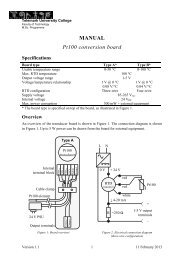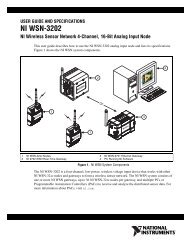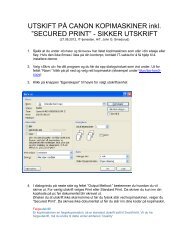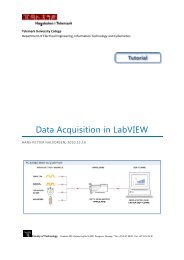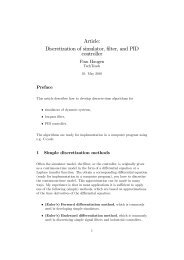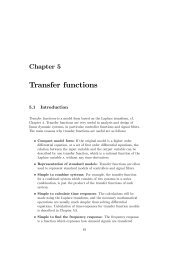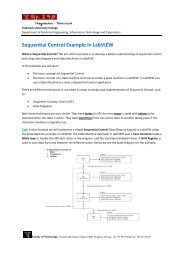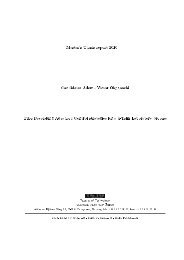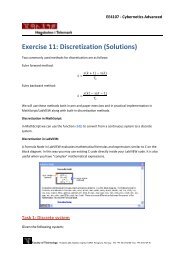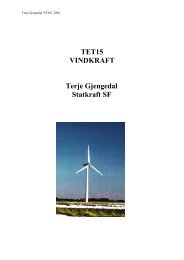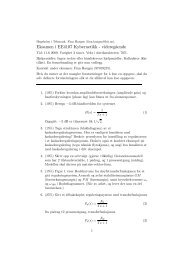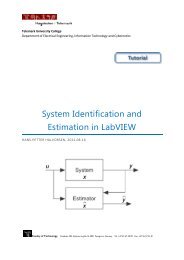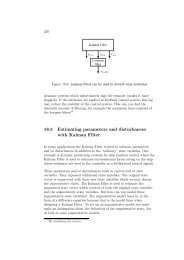State estimation with Kalman Filter
State estimation with Kalman Filter
State estimation with Kalman Filter
Create successful ePaper yourself
Turn your PDF publications into a flip-book with our unique Google optimized e-Paper software.
F. Haugen: Kompendium for Kyb. 2 ved Høgskolen i Oslo 119<br />
<strong>with</strong> auto-covariance<br />
where<br />
R w (L) =Qδ(L) (8.76)<br />
Q =<br />
· ¸<br />
Q11 0<br />
0 Q 22<br />
(8.77)<br />
Assuming that the level x 1 is measured, we add the following measurement<br />
equation to the state space model:<br />
y(k) =g [x p (k),u(k)] + v(k) =x 1 (k)+v(k) (8.78)<br />
where v is white measurement noise <strong>with</strong> assumed variance<br />
where R is the measurement variance.<br />
The following numerical values are used:<br />
R v (L) =Rδ(L) (8.79)<br />
Sampling time: T =0.1 s (8.80)<br />
A tank =0.1 m 2 (8.81)<br />
K p =0.001 (m 3 /s)/V (8.82)<br />
· ¸<br />
0.01 0<br />
Q =<br />
(initally, may be adjusted)<br />
0 0.01<br />
(8.83)<br />
R =0.0001 m 2 (Gaussian white noise) (8.84)<br />
We will set the initial estimates as follows:<br />
x 1p (0) = x 1 (0) = y(0) (from the sensor) (8.85)<br />
x 2p (0) = 0 (assuming no information about initial value (8.86)<br />
The <strong>Kalman</strong> <strong>Filter</strong> algorithm is as follows: The predicted level<br />
measurement is calculated according to (8.35):<br />
y p (k) =g [x p (k),u(k)] = x 1p (k) (8.87)<br />
<strong>with</strong> initial value as given by (8.85). The innovation variable is calculated<br />
according to (8.36), where y is the level measurement:<br />
e(k) =y(k) − y p (k) (8.88)<br />
The corrected state estimate is calculated according to (8.37):<br />
x c (k) =x p (k)+Ke(k) (8.89)



